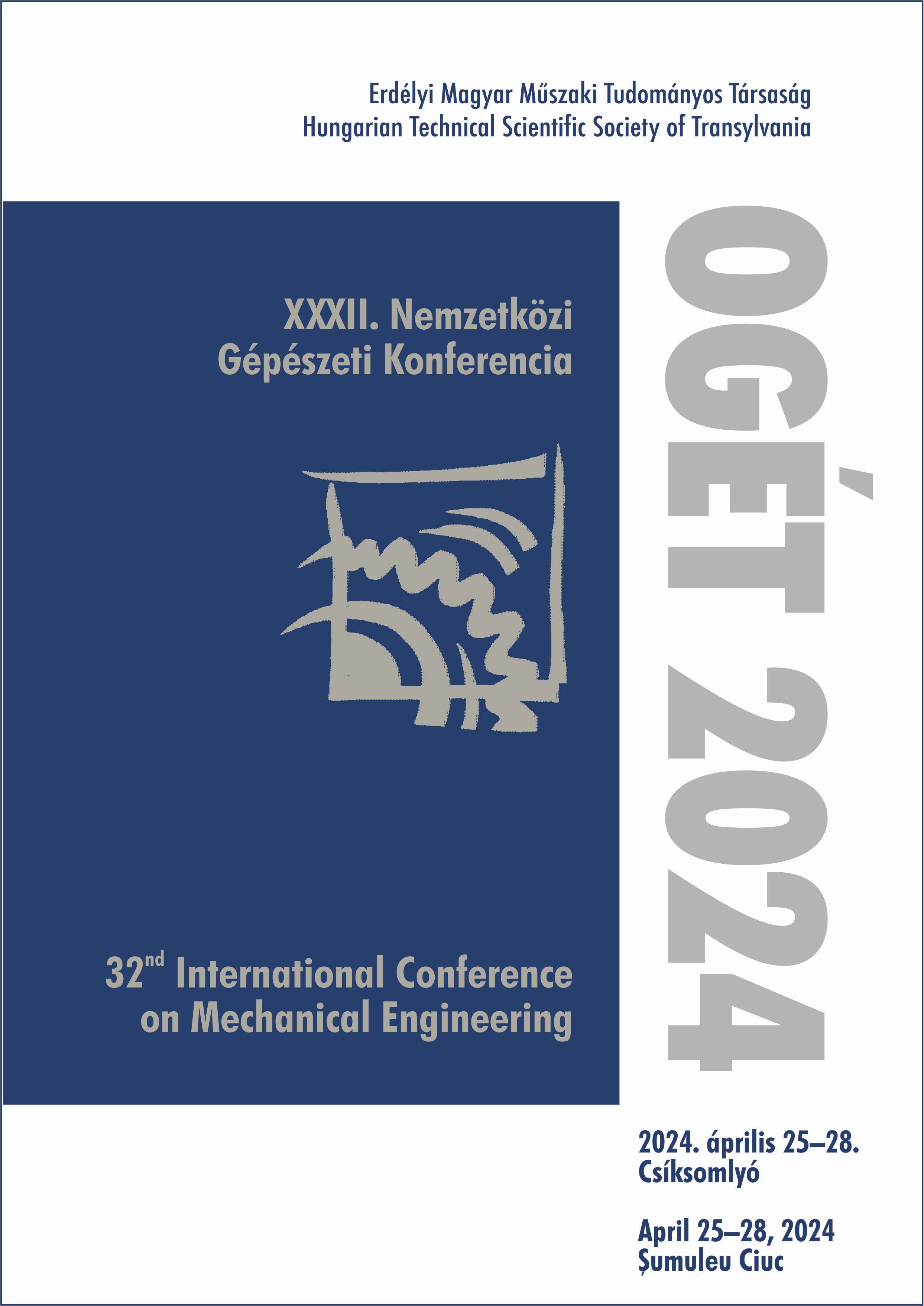Változtatható inerter modellezése és szimulációja
Modeling and simulation of a variable inerter
Keywords:
variable inerter, nonlinear dynamics, simulation, MATLAB, Simscape Multibody, /, változtatható inerter, nemlineáris dinamika, szimulációAbstract
An inerter is a passive mechanical element where the applied actuating force is proportional to the relative acceleration. In this case, the proportionality factor is called inertance. The inertance can be changed in several ways, for example by a suitably designed mechanism. If a variable inerter is part of a vibration mitigating system, the value of the inertance becomes tunable during operation. This way, appropriate damping can be provided for different excitations. The nonlinearity resulting from the implementation of variable inerters further complicates the tuning of the inertance and thus the design of the controller used for tuning. The aim of this paper is to present the mechanical model of a variable inerter and to evaluate the properties of the system under investigation.
Kivonat
Az inerter egy passzív mechanikai elem, ahol az alkalmazott működtető erő arányos a relatív gyorsulással, az arányossági tényező az úgynevezett inertancia. Az inertanciát többféleképpen lehet változtatni, például egy alkalmasan megtervezett mechanizmussal. Ha egy változtatható inerter egy rezgéscsillapító rendszer részét képezi, akkor az inertancia értéke működés közben hangolhatóvá válik. Így különböző gerjesztések esetén biztosítható a megfelelő csillapítás. A változtatható inerterek megvalósításából eredő nemlineáris jelleg tovább nehezíti az inertancia hangolását, így a hangoláshoz alkalmazott szabályozó tervezését is. Jelen tanulmány célja az, hogy bemutassa egy változtatható inerter mechanikai modelljét, illetve a vizsgált rendszer tulajdonságait.
References
Huang W., Xu J. Optimized Engineering Vibration Isolation, Absorption and Control, Springer Nature Singapore, Singapore, 2023.
Mizuno T., Toumiya T., Takasaki M., Vibration Isolation System Using Negative Stiffness, JSME International Journal Series C Mechanical Systems, Machine Elements and Manufacturing, J-STAGE, 2003, 46(3), 807-801.
Shirahatti A., Prasad P., Panzade P., Kulkarni M. M., Optimal Design of Passenger Car Suspension for Ride and Road Holding, Journal of The Brazilian Society of Mechanical Sciences and Engineering - J BRAZ SOC MECH SCI ENG, 2008, 30.
Borowski J., Stetter R., Rudolph S., Design, Dimensioning and Simulation of Inerters for the Reduction of Vehicle Wheel Vibrations–Case Studies, Vehicles, 2020, 2, 424-437.
Nemoto Y., Takino M., Tsukamoto S., Asai T., Numerical study of a point absorber wave energy converter with tuned variable inerter, Ocean Engineering, 2022, 257, 111696.
Bronowicki A., Macdonald R., Gursel Y., Goullioud R., Neville T., Platus D., Dual stage passive vibration isolation for optical interferometer missions, Proceedings of SPIE - The International Society for Optical Engineering, 2003, 4852.
Zilletti M., Feedback control unit with an inerter proof-mass electrodynamic actuator, Journal of Sound and Vibration, 2016, 369, 16-28.
Mahmoud A., Mechatronic Suspension Systems: A Survey and Directions for Future Work, American Journal of Engineering Research, 2021, 10, 237 – 244.
Ahmadian M., Pare C. A., A Quarter-Car Experimental Analysis of Alternative Semiactive Control Methods, Journal of Intelligent Material Systems and Structures, 2000, 11(8), 604-612.


